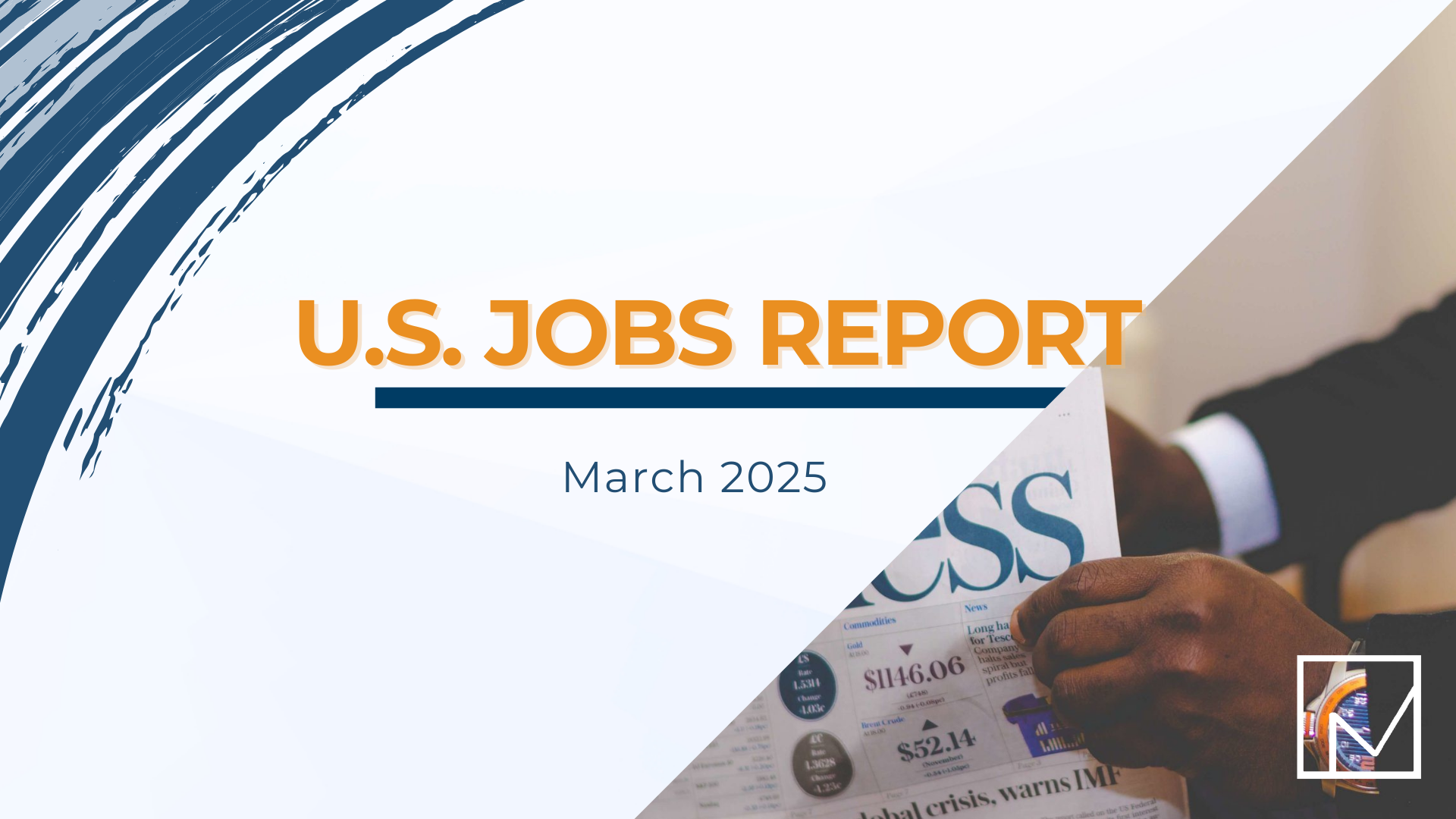Are the March Job Numbers a Positive Sign for the Economy?
The March 2025 Jobs report brought a mix of optimism and caution. On one hand, job growth remained strong. On the other, several indicators suggest the labor market may be cooling. According to Dow Jones data, the U.S. added 228,000 nonfarm jobs from February to March on a seasonally adjusted basis far exceeding the consensus estimate of 140,000.
In addition, average hourly wages rose to $36, representing a 3.8% year over year increase. While this was slightly under the projected 3.9%, it still signals steady income growth. However, it’s worth noting that the government revised down job growth estimates for January and February by a combined 48,000 jobs.
Furthermore, the number of job openings in February stood at 7.56 million, falling just short of expectations. This, combined with other indicators, may point to a softening in labor demand. Nevertheless, the March 2025 Jobs report continues to reflect resilience in the job market.
A Closer Look at the Numbers
Let’s dig into the details:
-
January job growth was revised down by 14,000
-
February was revised down by 34,000
-
Wages rose by 0.3% in March
-
The U6 unemployment rate ticked down slightly to 7.9% after jumping to 8.0% in February
Although the U6 rate showed a slight improvement, its elevated level suggests that a segment of the labor force remains underutilized. These individuals often working part time for economic reasons, represent a form of slack in the job market.
Moreover, employment in the federal government declined by 4,000 jobs in March. This followed an 11,000 job loss in February. It’s important to keep in mind that individuals on paid leave or receiving severance are still counted as employed.
All this data could point to a stable but slowing job market with enough qualified talent to fill open roles. Wage pressure seems to be easing, which may all the Fed to cut rates sooner.

Labor Participation & Wage Growth
Turning to participation rates, the prime age labor force participation rate (ages 25–54) declined by 0.2% to 83.3%. Meanwhile, the overall labor force participation rate edged up by 0.1% to 62.5%. Despite this slight gain, participation remains 0.9% below its pre pandemic level from February 2020.
-
Average hourly earnings rose by 9 cents to $36.00
-
Wages for nonsupervisory employees increased 5 cents to $30.96
-
The average workweek remained unchanged at 34.2 hours
In manufacturing, the average workweek held steady at 40.2 hours, while overtime was unchanged at 2.9 hours. Interestingly, the workweek for production and nonsupervisory employees increased by 0.2 hours to 33.8.
Additionally, ADP reported a gain of 155,000 jobs in March, further supporting the positive tone of the BLS data.
Job Openings and Labor Turnover: Wahts Chaning?
According to the JOLTS Data:
-
Job openings: 7.6 million
-
Hires: 5.4 million
-
Separations: 5.3 million
-
Quits: 3.2 million
-
Layoffs/discharges: 1.8 million
Overall, most categories remained stable. However, layoffs increased in sectors such as retail trade, real estate, and federal government. Conversely, job separations rose in state and local government education.
These numbers suggest that while workers are not quitting at higher rates, employers are beginning to implement more selective hiring and workforce reductions.
So, What Does It All Mean?
Taking all this into account, the March 2025 Jobs report paints a picture of a stable but potentially slowing labor market. Job creation is strong, wage growth is moderating, and participation is slowly recovering. Together, these trends may provide the Federal Reserve with enough confidence to consider interest rate cuts in the near future.
For staffing firms, this environment presents both challenges and opportunities. As employers hesitate to make full time hires, many will lean on temporary and contract staffing solutions to remain agile. Additionally, the pool of underemployed talent could offer relief to firms struggling with labor shortages.
Madison Resources: Your Partner in Uncertain Markets
As employment conditions shift month to month, one thing remains certain: your staffing business needs reliable back office and funding support. Madison Resources is here to help. We’re the go to partner for staffing firms seeking payroll funding, accounts receivable management, and operational support.
Whether you’re expanding or adapting to a changing labor market, we provide the resources to help you scale with confidence. Want help turning insights from the March 2025 Jobs report into action? Let’s talk.
Ready to start your funding journey? Partner with Madison Resources today [apply here]
Explore our website to find more staffing insights. Madison Resources is the premier payroll funding and back office support partner to the staffing industry. Grow with confidence.


